What's New
Displaying results 2731 - 2740 of 4052
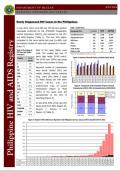
Resource | Fact Sheets,
In July 2014, there were 585 new HIV Ab seropositive individuals confirmed by the STD/AIDS Cooperative Central Laboratory (SACCL) and reported to the HIV and AIDS Registry (Table 1). This was 30% higher compared to the same period last year (n=449), and the highest number of cases ever reported in a month. [Figure 1].
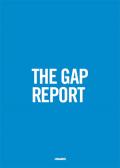
Resource | Publications,
How do we close the gap between the people moving forward and the people being left behind? This was the question we set out to answer in the UNAIDS Gap report. Similar to the Global report, the goal of the Gap report is to provide the best possible data, but, in addition, to give information and analysis on the people being left behind.
Too often people at higher risk of HIV infection face multiple issues—such as being a young woman displaced from home and living with HIV. Ensuring that no one is left behind means closing the gap between people can get services and people who can't, the people who are protected and the people who are punished.
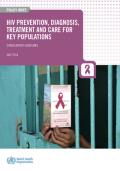
Resource | Guidelines,
This policy brief provides an overview of key findings, data and figures of the new consolidated guidelines on HIV prevention, diagnosis, treatment and care for key populations. In addition, it offers an overview of the comprehensive package on interventions and a table summarizing WHO recommendations concerning key populations.
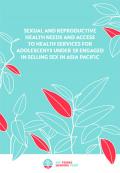
Resource | Publications,
This paper addresses the sexual and reproductive health (SRH)—including HIV prevention, care and treatment — and other health service needs of adolescents aged 10 – 17 engaged in selling sex in the Asia Pacific region. While the United Nations defines adolescents as 10 – 19, we purposefully focus on ages 10 – 17 due to the unique legal and policy implications faced by this age group as compared to older cohorts. In regards to terminology, the term "engaged in selling sex" is used for its inclusive and non-stigmatising connotations as well as the benefit of a behavioural description to tailoring programmatic interventions.
While the paper predominantly focuses on SRH and health services, we recognise that multiple systems, such as the social welfare and child protection systems, are organized around responding to adolescent needs. In addition, health issues arise from adolescent contact with health, law enforcement and child protection systems.
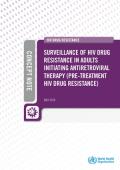
Resource | Publications,
Nationally representative surveillance of HIVDR in populations initiating a standard triple-drug ART combination is critical to inform the selection of effective first-line ART combinations, as well as adequate pre-exposure prophylaxis (PrEP) and post-exposure prophylaxis (PEP) regimens.
The purpose of this survey is to calculate (a) a nationally representative prevalence estimate of HIVDR among all ART initiators, and (b) a nationally representative prevalence estimate of HIVDR among initiators without prior exposure to ARV drugs.
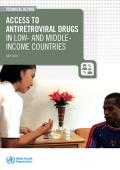
Resource | Publications,
This report has been compiled using country-level data reported to WHO on the procurement of ART via the Global Procurement Reporting Mechanism (GPRM), the WHO database on the regulatory status of ART, reports on the production capacity for the active pharmaceutical ingredients (APIs) of ARVs, the annual WHO surveys on the use of ART, the Global AIDS Response Progress Report data, the Global Update on the Health Sector Response to HIV 2014, as well as contributions from countries and major stakeholders involved in ART access.
In this report we examine global trends in ARV prices and assess how WHO treatment guidelines have influenced the uptake of different ARV formulations.
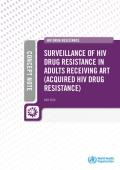
Resource | Publications,
This concept note describes methods to assess nationally representative levels of viral load suppression and drug resistance in adults receiving ART through the implementation of a cross-sectional survey.
The main purpose of this survey is to calculate nationally representative prevalence estimates (with associated confidence intervals) of (1) VL suppression and (2) of HIVDR in populations receiving ART for 12 (±3) months and for ≥48 months.

Resource | Fact Sheets,
Hepatitis B is a potentially life-threatening liver disease caused by hepatitis B virus (HBV). HBV is found in blood and body fluids of carriers.
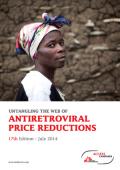
Resource | Publications,
This 17th edition of Untangling the Web of Antiretroviral Price Reductions is a departure from recent previous years. For this edition, the methods of collecting information on the sources and prices of antiretrovirals (ARVs) remain the same, but information is presented in a new, shorter format focusing on a few key drugs as well as future regimens, along with an analysis of the current opportunities, challenges and threats faced in keeping the price of ARVs down.






